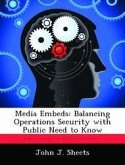Airpower, an important instrument in the tool kit of a Combatant Commander, may be used in both a kinetic and non-kinetic manner. In Afghanistan, where operations are spread across a vast area and the terrain creates challenges for other elements of joint fire support, kinetic effects from the air component have been particularly important to support operations. Anti-Coalition Militants are unable to negate the effects of kinetic airpower via direct means and have turned to indirect measures to attempt to limit its effectiveness. The Anti-Coalition Militant indirect approach of inducing and exploiting civilian casualties has brought a great deal of negative attention regarding the use of kinetic airpower in Afghanistan. This negative attention has had the strategic effect of straining U.S. - Afghan relations and caused the USCENTCOM Commander to review the use of kinetic airpower -- thus jeopardizing the use of this valuable asset in theater. This paper addresses how the U.S. can balance the kinetic effects of airpower with strategic objectives in counterinsurgency.
Hinweis: Dieser Artikel kann nur an eine deutsche Lieferadresse ausgeliefert werden.
Hinweis: Dieser Artikel kann nur an eine deutsche Lieferadresse ausgeliefert werden.








